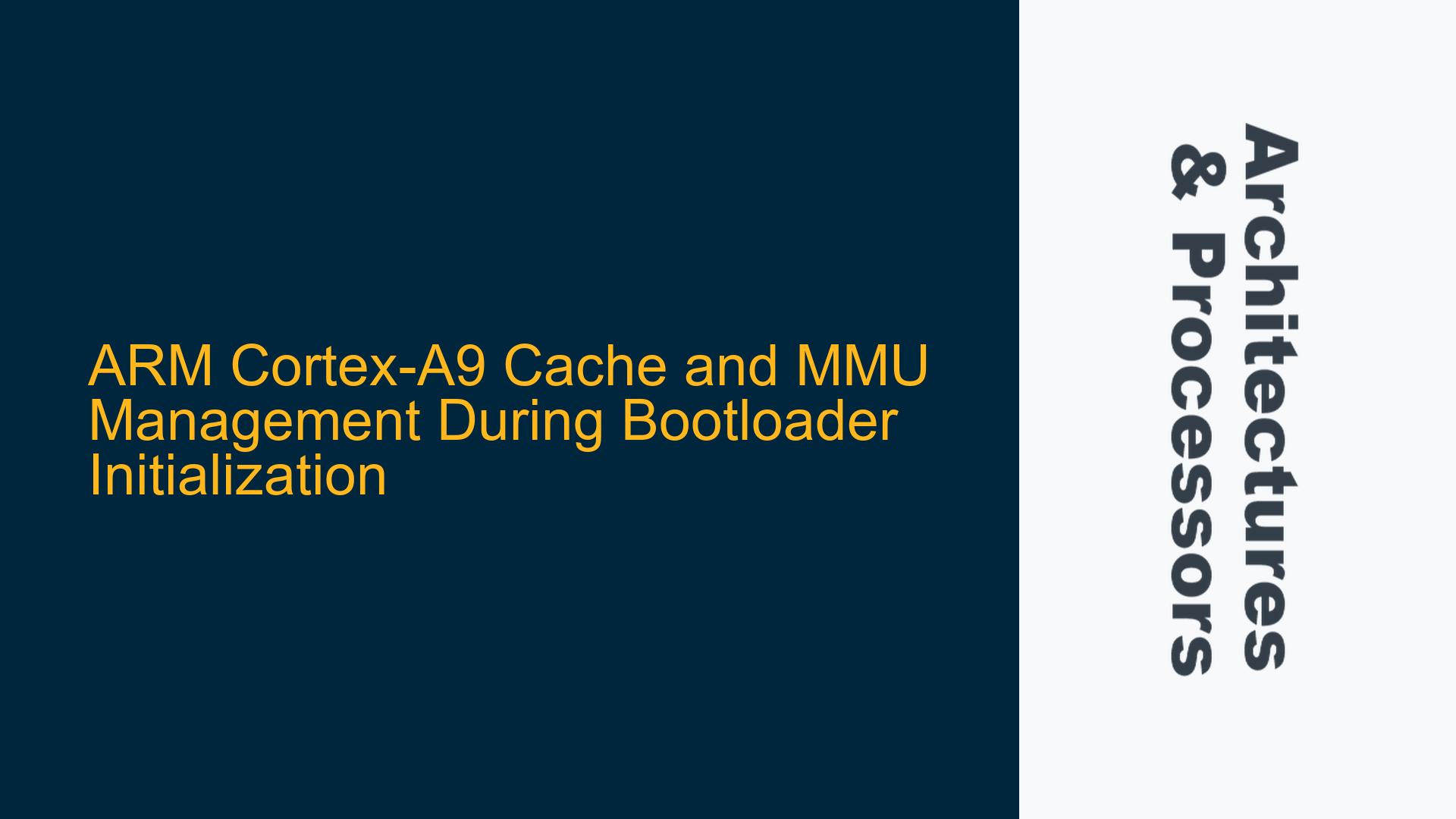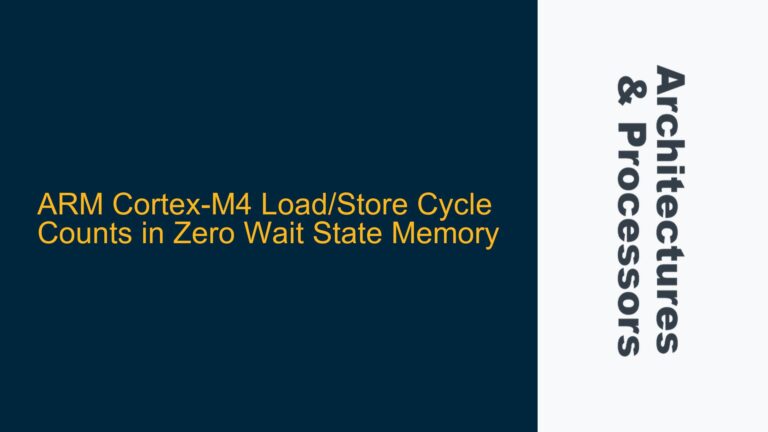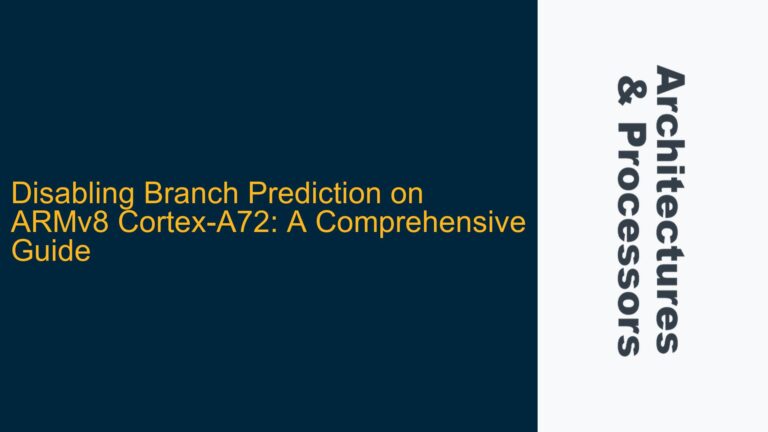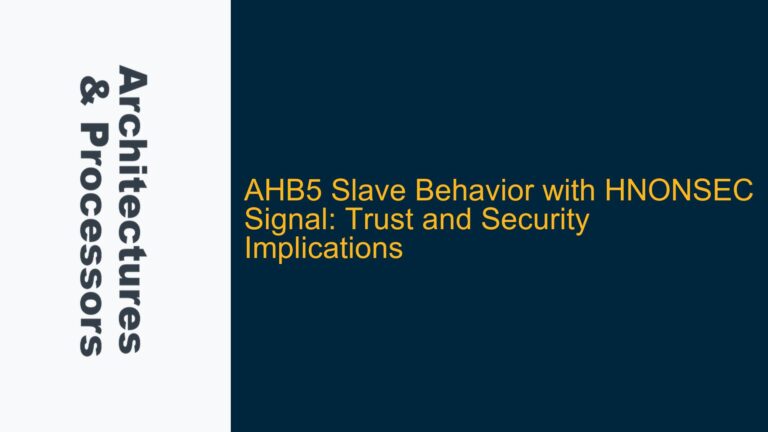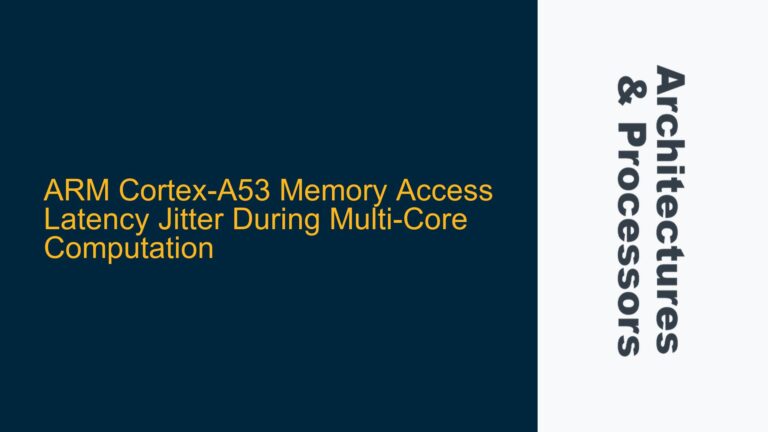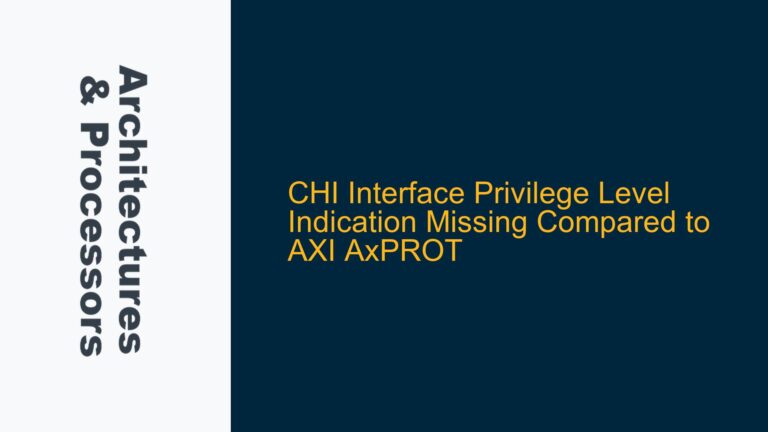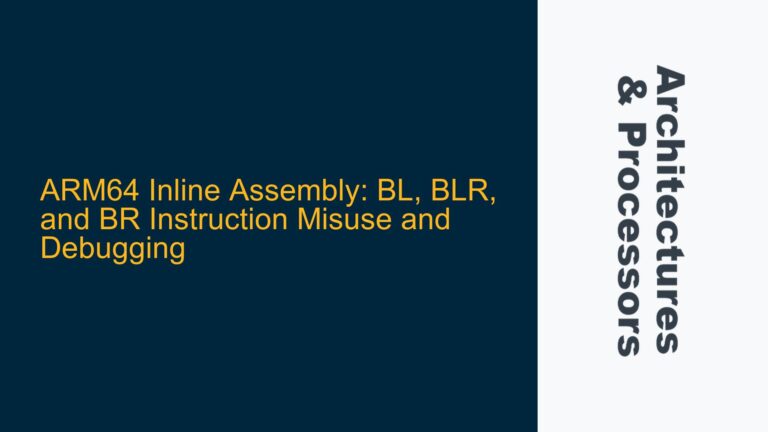Cache and MMU Enable/Disable Sequence in Bootloader Initialization
When developing a custom bootloader for an ARM Cortex-A9 processor, such as the one found in the NXP i.MX6 DualLite, managing the caches and Memory Management Unit (MMU) is critical to ensure proper system initialization. The bootloader must initialize a large block of memory (e.g., 50 MB) to zeros, and this process can be significantly accelerated by enabling the caches, MMU, and branch prediction. However, improper handling of these components can lead to subtle issues such as cache coherency problems, stale data, or even system crashes when transitioning to the operating system (OS). The core issue revolves around whether the current sequence of enabling and disabling the caches and MMU is sufficient or if additional steps, such as cache invalidation, are required.
The sequence provided in the discussion involves enabling the caches, MMU, and branch prediction, initializing the memory, and then disabling these features before branching to the OS. While this approach seems straightforward, it raises questions about cache coherency and the potential need for cache invalidation. Additionally, the use of Direct Memory Access (DMA) for memory initialization is suggested as an alternative to improve performance and avoid potential pitfalls associated with cache management.
Cache Coherency and Invalidation Requirements During Bootloader Execution
The ARM Cortex-A9 processor features separate instruction and data caches, which can operate independently. When the caches are enabled, they begin to store copies of frequently accessed data and instructions to improve performance. However, this introduces the risk of cache coherency issues, especially when the memory content is modified directly without proper cache management. In the context of bootloader initialization, the following scenarios must be considered:
-
Cache Enable Without Invalidation: Enabling the caches without invalidating them first can result in the processor accessing stale data. This is because the caches may contain residual data from previous operations or power-on states. If the bootloader writes to memory without ensuring that the caches are clean and invalid, the data in the caches may not reflect the actual contents of the memory.
-
Cache Disable Without Clean: Disabling the caches without cleaning them can lead to data loss. If the caches contain modified data that has not been written back to memory, disabling the caches will result in this data being lost. This is particularly problematic when transitioning to the OS, as the OS may rely on the memory being in a specific state.
-
MMU Enable Without Proper Configuration: The MMU translates virtual addresses to physical addresses and manages memory protection. Enabling the MMU without properly configuring the translation tables can result in incorrect memory access or protection faults. Additionally, the MMU relies on the caches for performance, so improper cache management can indirectly affect MMU operation.
-
Branch Prediction Impact: Branch prediction improves performance by speculatively executing instructions based on past behavior. However, if the prediction logic is not properly reset or managed, it can lead to incorrect execution paths, especially during bootloader initialization where the execution flow may differ significantly from normal operation.
To address these issues, the bootloader must ensure that the caches are invalidated before enabling them, cleaned before disabling them, and that the MMU is properly configured. Additionally, the use of DMA for memory initialization can offload the processor and avoid cache-related complications.
Implementing Cache Invalidation, DMA Initialization, and Proper MMU Configuration
To ensure reliable bootloader operation and a smooth transition to the OS, the following steps should be taken:
Cache Invalidation Before Enable
Before enabling the caches, the bootloader must invalidate both the instruction and data caches to ensure that no stale data is present. This can be achieved using the mcr instruction to perform a cache invalidate operation. For example:
mcr p15, 0, r0, c7, c5, 0 // Invalidate instruction cache
mcr p15, 0, r0, c7, c6, 0 // Invalidate data cache
These instructions ensure that the caches are empty and ready to be populated with fresh data.
DMA for Memory Initialization
Using DMA to initialize the 50 MB memory block can significantly improve performance and reduce the complexity of cache management. The bootloader can configure the DMA controller to write zeros to the target memory region. Since DMA operates independently of the processor, it bypasses the caches entirely, ensuring that the memory is initialized correctly without cache coherency issues. The DMA controller should be configured with the appropriate source (e.g., a zero-filled buffer) and destination addresses, and the transfer size should be set to cover the entire 50 MB region.
Cache Clean Before Disable
Before disabling the caches, the bootloader must ensure that any modified data in the caches is written back to memory. This can be achieved using the mcr instruction to perform a cache clean operation. For example:
mcr p15, 0, r0, c7, c10, 0 // Clean data cache
This instruction ensures that all dirty cache lines are written back to memory, preventing data loss when the caches are disabled.
Proper MMU Configuration
The MMU must be configured with the appropriate translation tables before it is enabled. The bootloader should set up the page tables to map the physical memory to the desired virtual addresses and configure the memory protection settings. Once the MMU is enabled, the bootloader must ensure that the caches are managed correctly to avoid inconsistencies between the virtual and physical memory views.
Branch Prediction Management
The branch prediction logic should be reset before enabling it to ensure that it does not rely on stale history. This can be achieved using the mcr instruction to perform a branch predictor invalidate operation. For example:
mcr p15, 0, r0, c7, c5, 6 // Invalidate branch predictor
This instruction ensures that the branch predictor starts with a clean state, reducing the risk of incorrect speculative execution.
Final Sequence
The final sequence of operations in the bootloader should be as follows:
- Invalidate the instruction and data caches.
- Enable the caches, MMU, and branch prediction.
- Initialize the 50 MB memory block using DMA.
- Clean the data cache.
- Disable the caches, MMU, and branch prediction.
- Branch to the OS.
By following this sequence, the bootloader ensures that the memory is initialized correctly, the caches are managed properly, and the system is ready for the OS to take over. This approach minimizes the risk of cache coherency issues, data loss, and incorrect memory access, providing a robust foundation for the OS initialization process.
Summary Table
| Step | Operation | Instruction/Description |
|---|---|---|
| 1 | Invalidate Instruction Cache | mcr p15, 0, r0, c7, c5, 0 |
| 2 | Invalidate Data Cache | mcr p15, 0, r0, c7, c6, 0 |
| 3 | Enable Caches, MMU, and Branch Prediction | mrc p15, 0, r0, c1, c0, 0 followed by orr and mcr |
| 4 | Initialize Memory Using DMA | Configure DMA controller for zero-fill operation |
| 5 | Clean Data Cache | mcr p15, 0, r0, c7, c10, 0 |
| 6 | Disable Caches, MMU, and Branch Prediction | mrc p15, 0, r0, c1, c0, 0 followed by bic and mcr |
| 7 | Branch to OS | bx or equivalent instruction |
This table provides a concise overview of the steps required to manage the caches, MMU, and branch prediction during bootloader initialization, ensuring a smooth transition to the OS.
